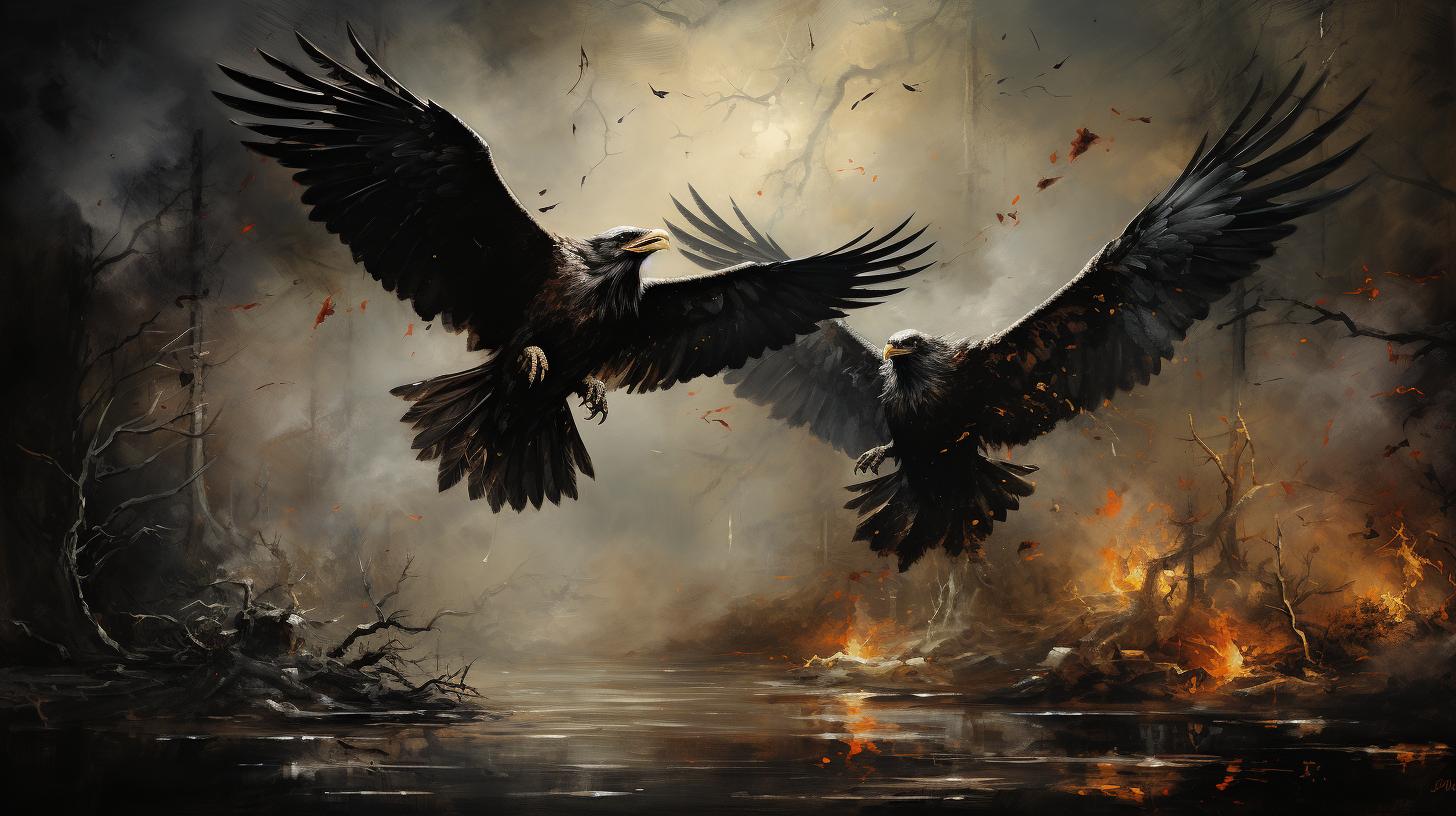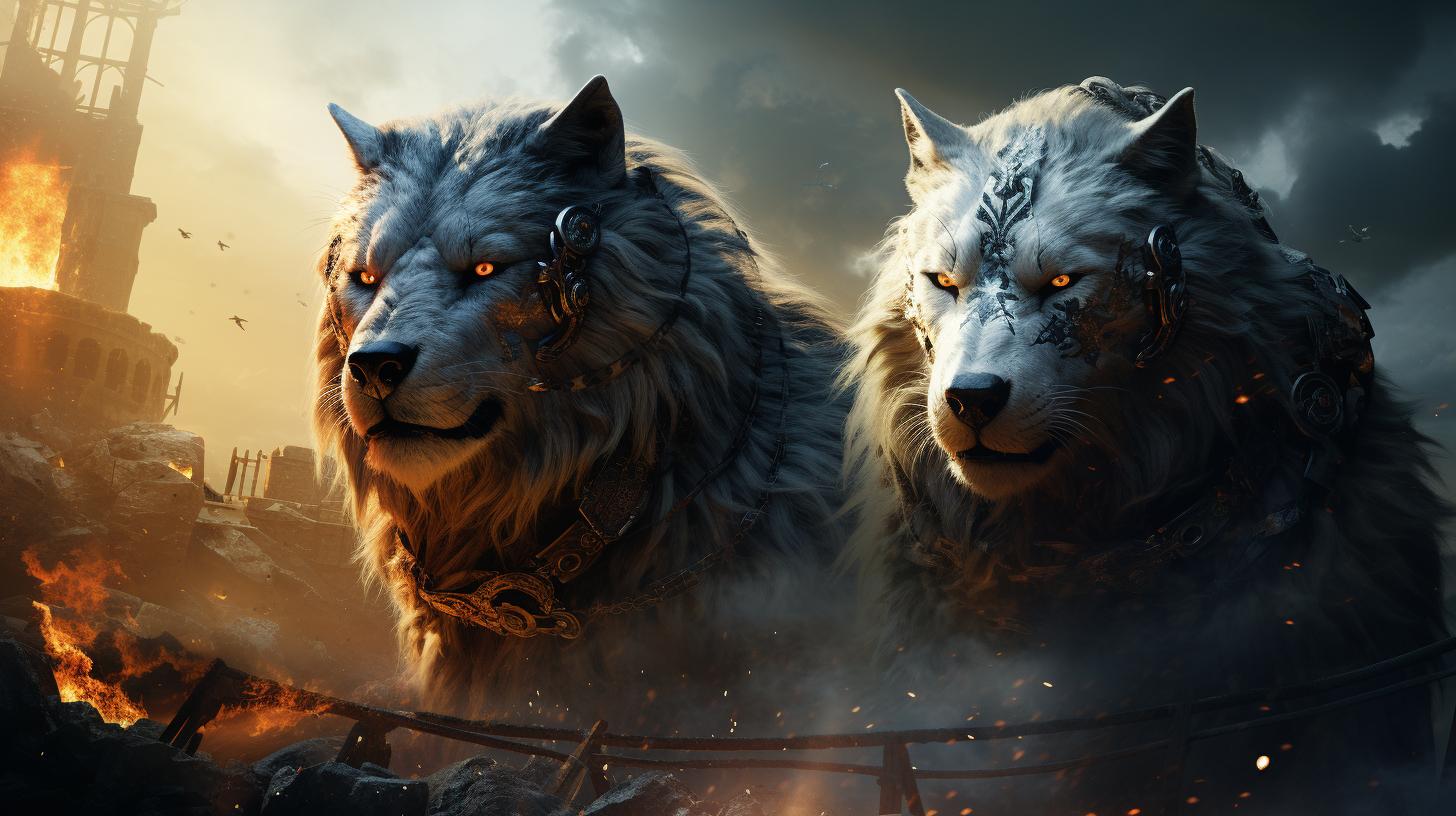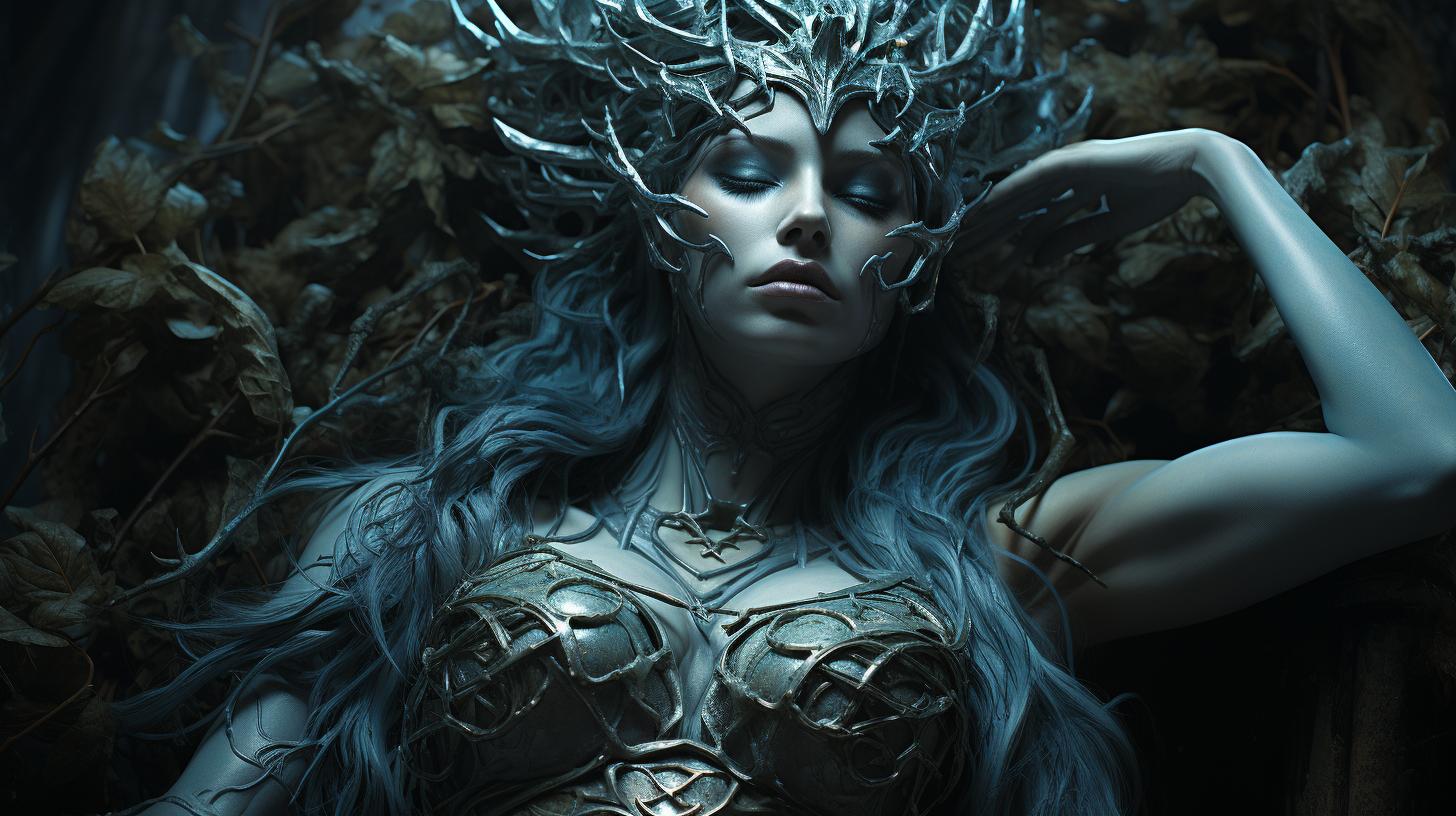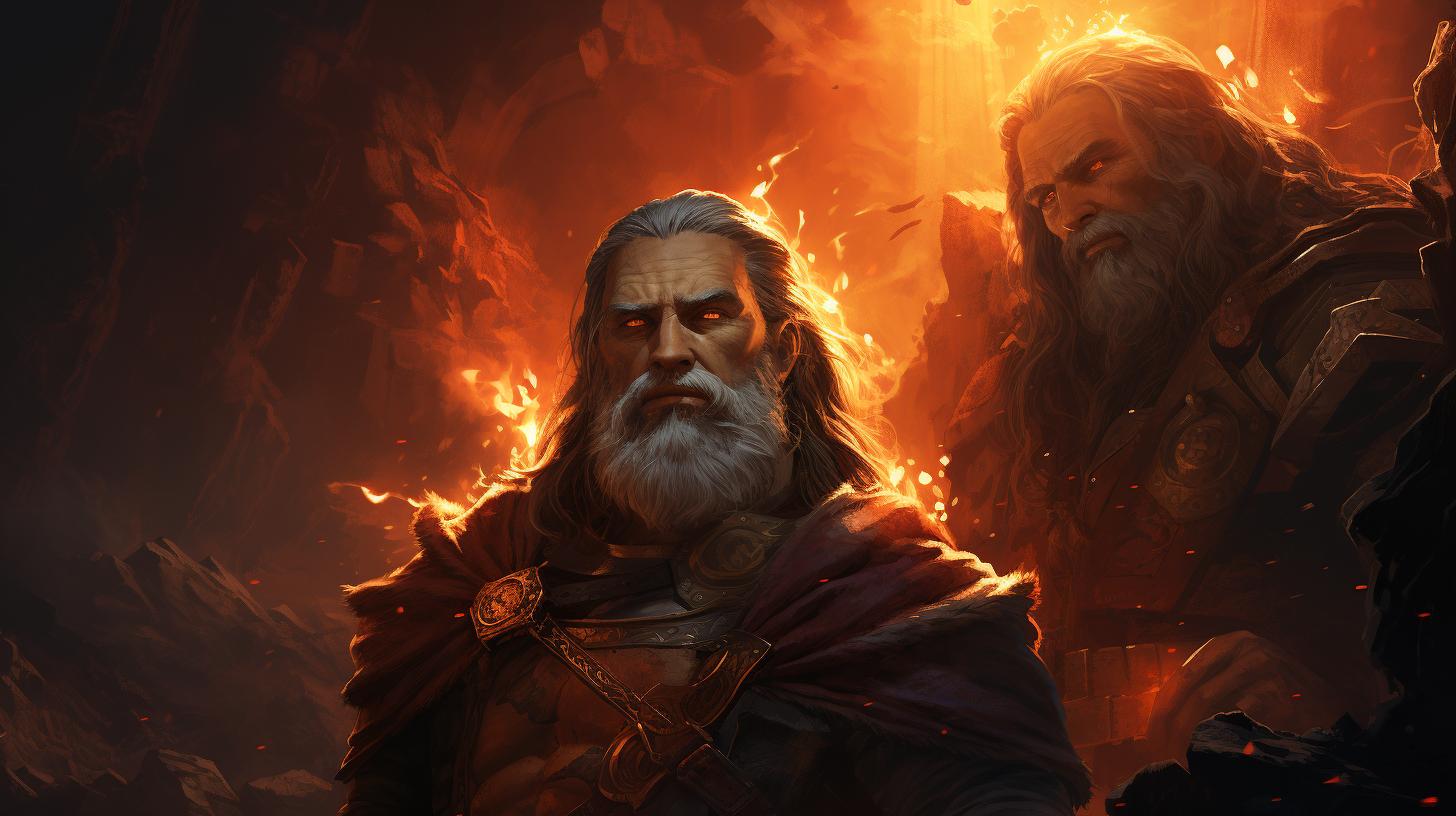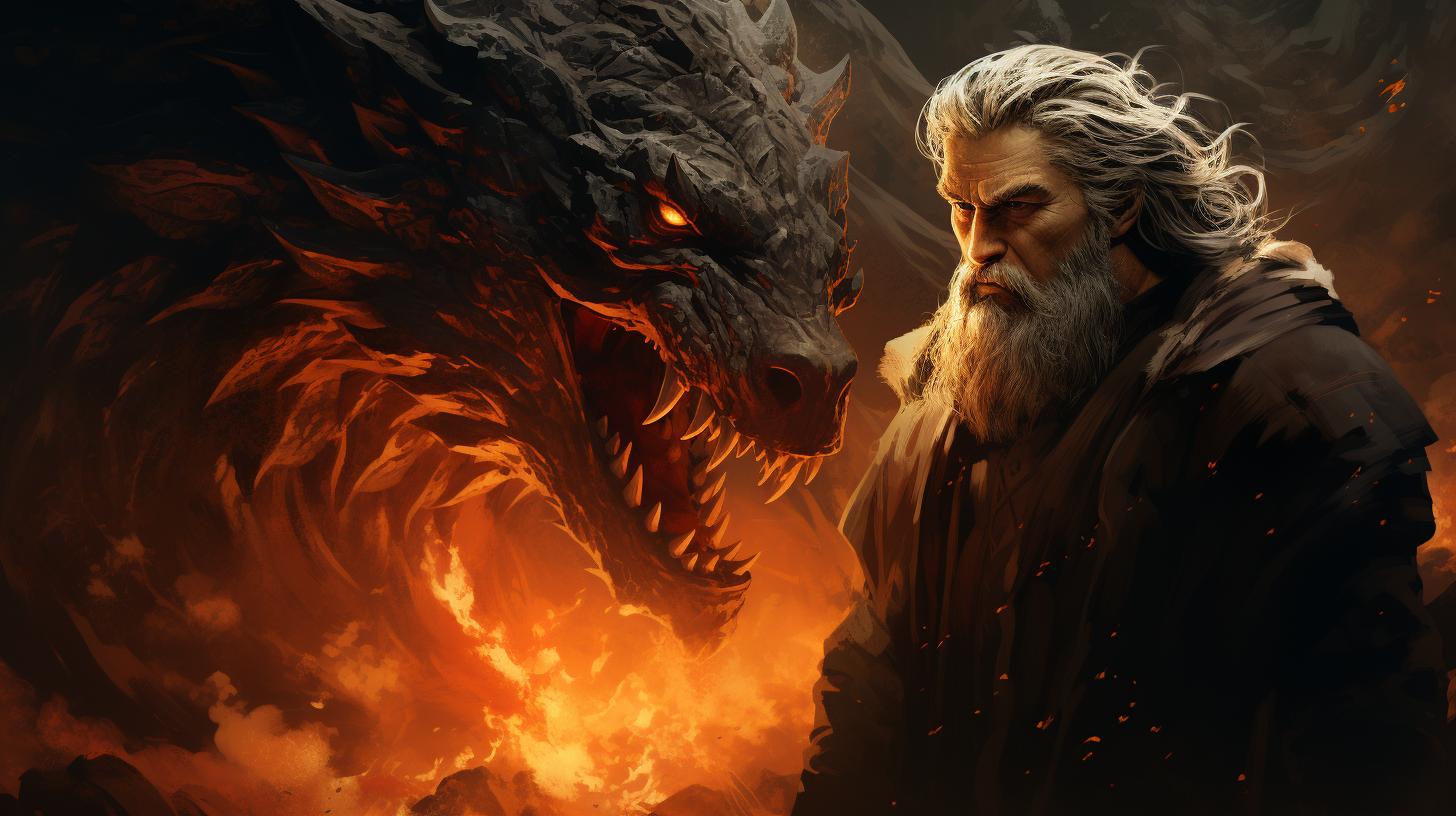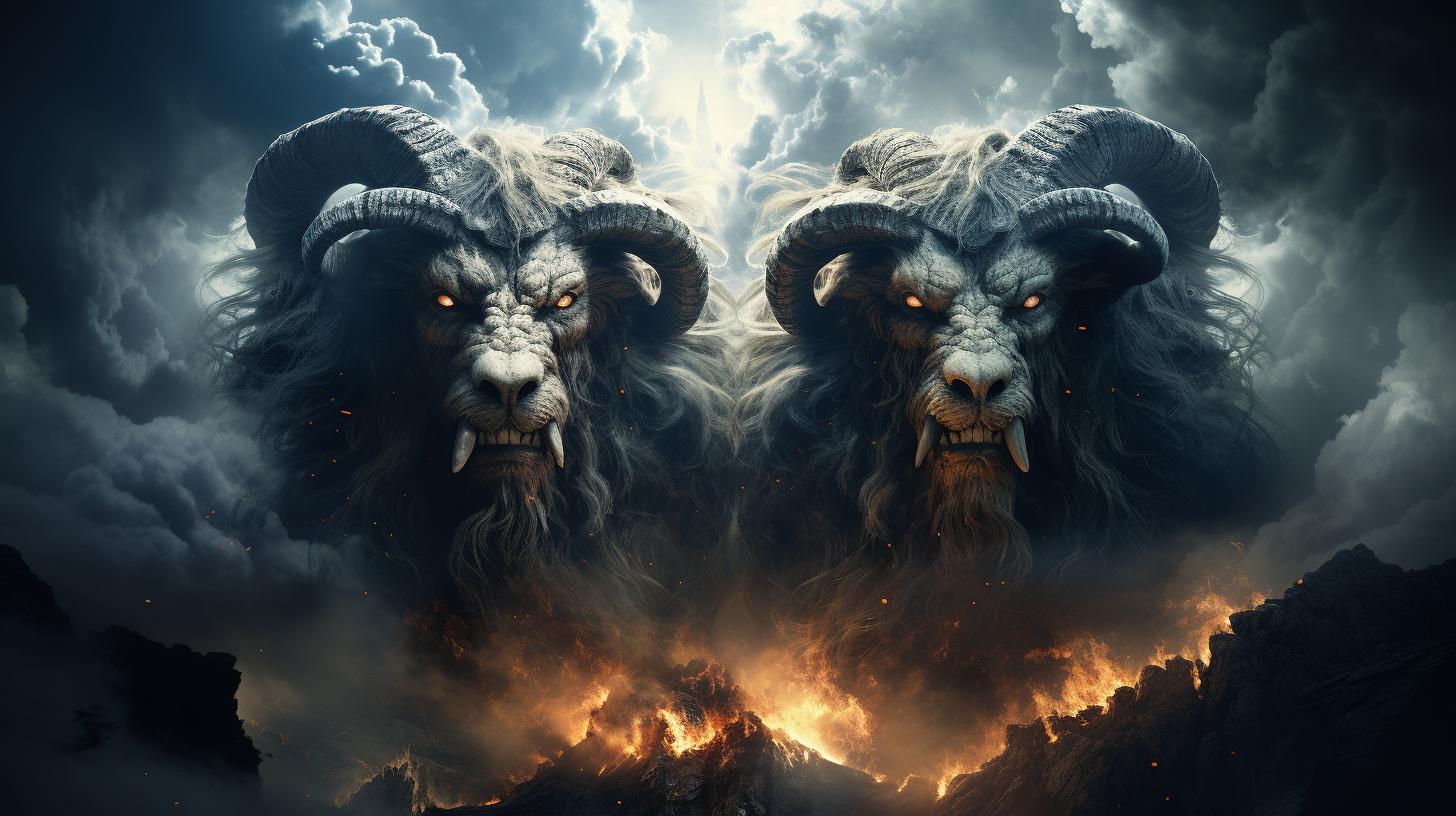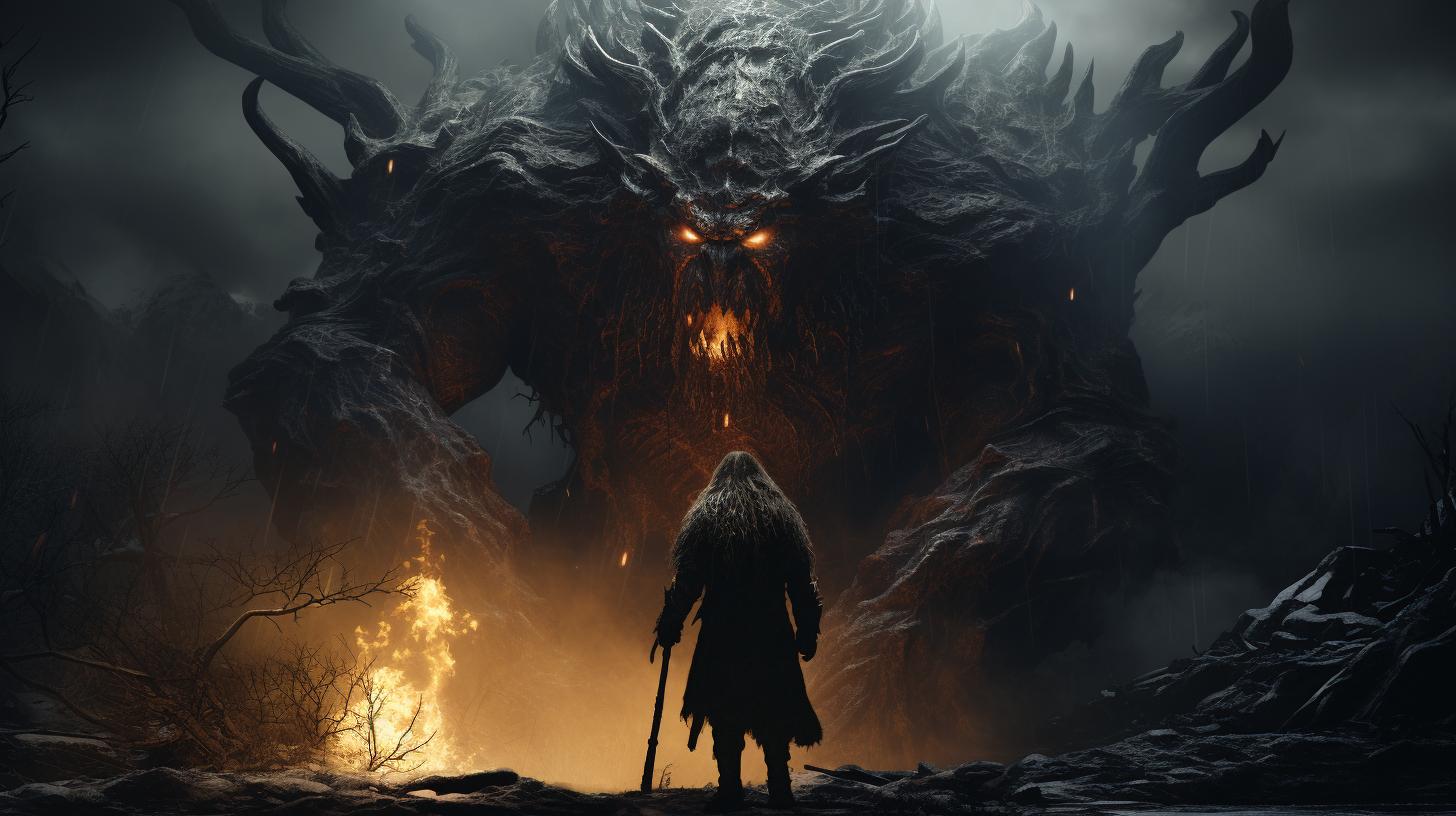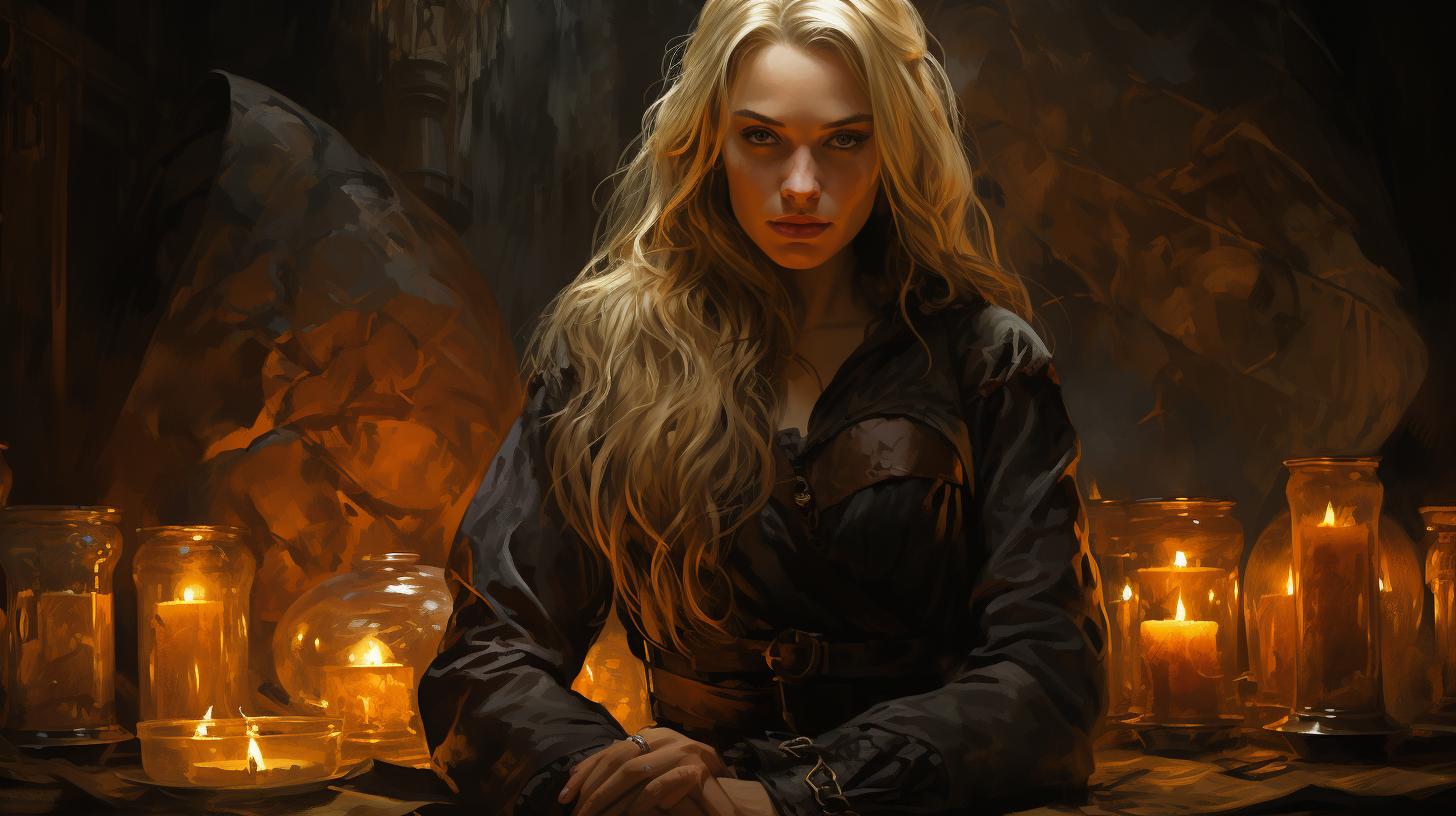Huginn and Muninn: Exploring the Fascinating Norse Mythology
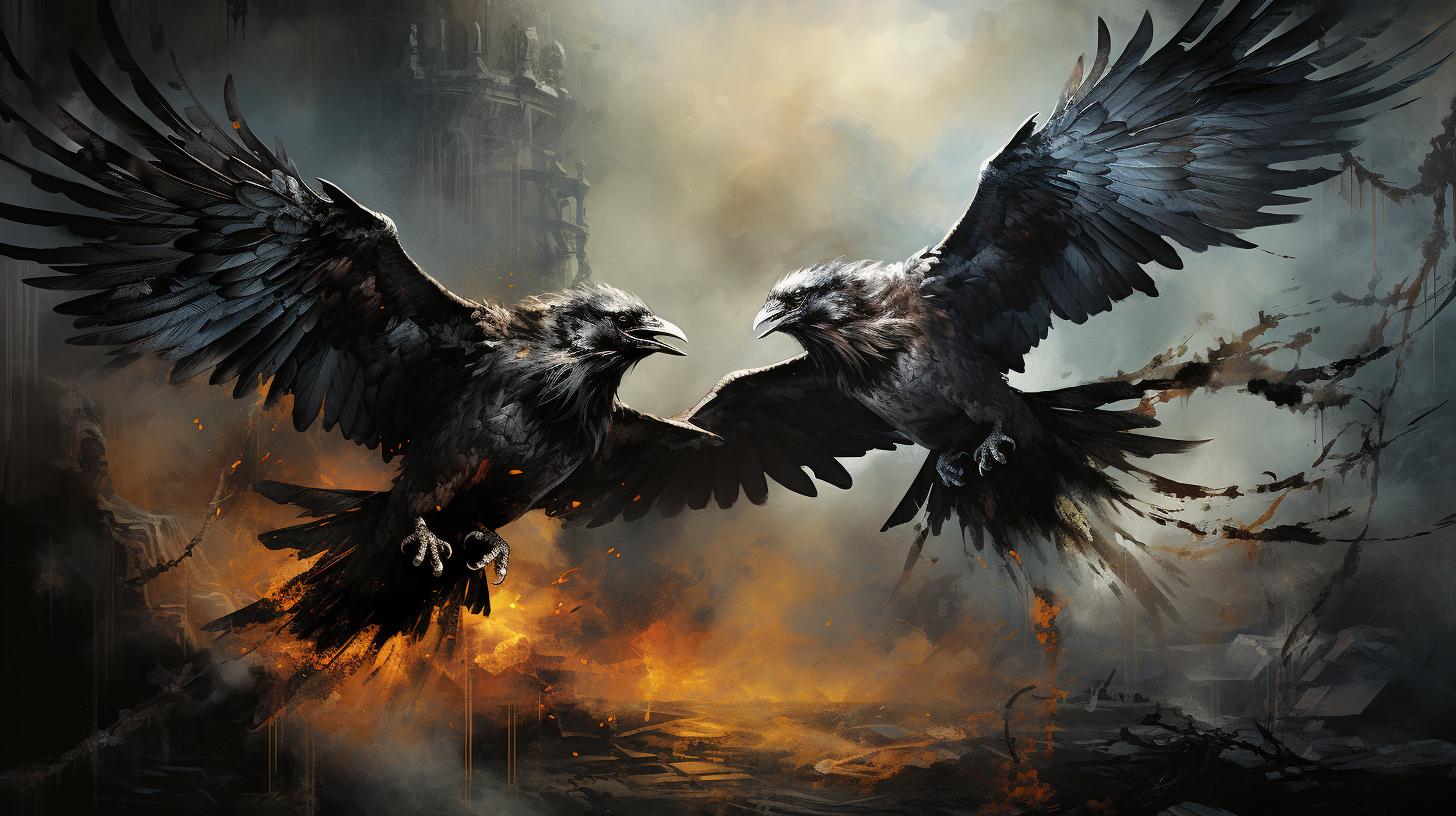
Ravens hold significant symbolism in Norse mythology, particularly Huginn and Muninn. These trusted messengers of Odin, the Norse god, embark on daily journeys gathering knowledge from the nine realms.
Their presence embodies wisdom, memory, and a thirst for understanding. Exploring their role, symbolism, and cultural impact sheds light on the rich tapestry of Norse mythology, with Huginn and Muninn serving as potent symbols of Odin’s divine powers and his unyielding pursuit of knowledge.
This article delves into the depths of their mythological origins, their representations in ancient literature, and their enduring legacy in Viking culture and contemporary interpretations.
Raven Symbolism in Norse Mythology
The raven holds significant symbolism in Norse culture, particularly in Norse mythology. As messengers and companions of the gods, ravens play a crucial role in conveying important messages and gathering information.
They are revered for their intelligence and mystical qualities, representing wisdom and foresight.
The Importance of Ravens in Norse Culture
Ravens hold a special place in Norse culture, being frequently associated with Odin, the chief god of the Norse pantheon. Odin is often depicted with two ravens, Huginn and Muninn, perched on his shoulders, symbolizing their close relationship and their role as his trusted helpers.
Ravens were also highly regarded in everyday Norse life, as they were believed to possess divine qualities and supernatural powers. They were seen as omens of upcoming events and were thought to possess deep knowledge of the world.
Symbolic Meanings Associated with Ravens
Ravens in Norse mythology carry symbolic meanings that reflect their mystical nature. They are often associated with mystery, darkness, and the unknown, representing the hidden wisdom and secrets of the universe.
Their black feathers and piercing eyes symbolize their connection to the spirit world and the realm of the gods.
Ravens are also connected to the concept of fate, embodying the idea of predetermined events and the inevitability of destiny.
They serve as a reminder of the cyclical nature of life, death, and rebirth, symbolizing the eternal cycle of existence.
Interpretations of Raven Symbolism in Norse Mythology
The symbolism surrounding ravens in Norse mythology offers various interpretations and insights into the Norse worldview. Ravens’ association with Odin highlights the deity’s role as the god of wisdom, magic, and knowledge.
They represent Odin’s ability to comprehend the hidden truths of the cosmos and his pursuit of profound insight.
Furthermore, ravens’ presence in mythological narratives and their association with divination imply their connection to the spiritual realm and their role as divine messengers.
Their ability to traverse the nine realms and gather information reflects their link to the interconnectedness of all things and the flow of knowledge between different dimensions.
In conclusion, ravens hold significant symbolism in Norse mythology, reflecting their importance in Norse culture and their association with wisdom, mysticism, and divine communication.
Understanding the symbolic meanings attributed to ravens enriches our understanding of the complex Norse cosmology and the role of these magnificent birds in Norse mythological narratives.
The Role of Ravens in Norse Mythology
Ravens hold great significance in Norse mythology, especially the duo of Huginn and Muninn, who are known as Odin’s trusted messengers.
These intelligent birds play a crucial role in Odin’s pursuit of wisdom and knowledge, acting as his loyal companions and sources of information.
Huginn and Muninn: Odin’s Trusted Messengers
Huginn and Muninn, the inseparable ravens, are entrusted with the task of gathering knowledge for Odin. They embark on a daily journey, soaring through the nine realms to observe and absorb information.
This extraordinary connection between Odin and the ravens highlights their deep bond and essential role in his quest for wisdom.
Their Daily Journey and Gathered Knowledge
At dawn, Huginn and Muninn spread their wings and take flight, traveling across the vast expanse of the Norse realms. They witness events, encounter beings, and absorb the latest news, tales, and insights.
The evidence they gather during their travels forms a crucial part of Odin’s extensive knowledge and understanding of the world.
Significance of Ravens in Odin’s Wisdom and Knowledge
The presence of Huginn and Muninn symbolizes the depth of Odin’s wisdom and his all-encompassing knowledge. The ravens’ vigilant observation and constant flow of information contribute to Odin’s ability to make wise decisions and navigate the complexities of the Norse cosmos.
Their role as messengers speaks to Odin’s thirst for knowledge and his dedication to seeking enlightenment and understanding.
Exploring Huginn and Muninn Tattoos
Huginn and Muninn, the revered ravens of Norse mythology, have become popular subjects for tattoos, representing the rich symbolism and allure of Norse culture. Let’s delve into the origins and popularity of Huginn and Muninn tattoos, explore various design ideas and symbolic elements, and uncover the diverse interpretations and personal meanings associated with these captivating tattoos.
Origins and Popularity of Huginn and Muninn Tattoos
The origins of Huginn and Muninn tattoos can be traced back to the ancient Norse mythology, where these ravens played significant roles as messengers of Odin. The popularity of these tattoos has soared in recent years, reflecting a growing fascination with Norse history, mythology, and spiritual symbolism.
Many individuals are drawn to these tattoos as a means to embrace the wisdom, intelligence, and ancient mystique associated with Huginn and Muninn.
Design Ideas and Symbolic Elements
When it comes to Huginn and Muninn tattoo designs, the options are diverse and intriguing. Some opt for realistic depictions of ravens perched on branches or in flight, while others prefer more artistic interpretations that incorporate Norse-inspired patterns and symbols.
Symbolic elements such as the Valknut, runic inscriptions, and Viking ship motifs are often incorporated into the design, adding depth and significance to the tattoo’s symbolism.
- Norse-inspired patterns and symbols
- Realistic depictions of ravens
- Valknut and runic inscriptions
- Viking ship motifs
Interpretations and Personal Meanings
Huginn and Muninn tattoos hold personal meanings that vary among individuals.
Some interpret these tattoos as a manifestation of their connection to ancient wisdom and knowledge, reflecting their thirst for understanding and growth. Others see the ravens as guardians or guides, symbolizing protection or the ability to navigate through life’s challenges.
The interpretation of these tattoos ultimately rests with the wearer, creating a deeply personal and nuanced representation of their connection to Norse mythology and its vast symbolism.
Understanding the Symbol of Huginn and Muninn
Known as the trusted messengers of Odin, the ravens Huginn and Muninn hold great significance in Norse mythology.
Exploring their symbolization reveals insights into the ancient myths and their connections to divine powers and wisdom.
Mythological Origins and Significance
The mythological origins of Huginn and Muninn can be traced back to ancient Norse texts and historical accounts. These ravens represent Odin’s inherent wisdom and his eternal quest for knowledge.
Their presence as divine messengers symbolizes the importance of gathering insight and information from the world around us.
Variations in Depictions and Representations
The depictions and representations of Huginn and Muninn vary across different artistic interpretations. From ancient carvings to modern artwork, these ravens are often depicted perched on Odin’s shoulders, symbolizing their close connection.
The variations in their appearance and posture reflect different artistic styles and individual interpretations of their symbolism.
Connection to Odin’s Divine Powers
The bond between Huginn, Muninn, and Odin goes beyond mere companionship. These ravens embody Odin’s ability to access hidden knowledge and his divine powers of wisdom and foresight. As messengers, they aid Odin in his exploration of the world and serve as conduits for his divine wisdom.
Understanding the symbol of Huginn and Muninn allows us to delve deeper into the intricate layers of Norse mythology, unlocking insights into Odin’s divine wisdom and the universal pursuit of knowledge.
Further Connections to Norse Mythology
Welcome to the exploration of further connections to Norse mythology. This section delves into other Norse symbols, mythological creatures and beings, and the influence of Norse mythology in modern pop culture.
Other Norse Symbols and their Meanings
Aside from Huginn and Muninn, Norse mythology is rich with various symbols, each carrying its own unique significance. Some notable symbols include:
- Yggdrasil: The sacred tree that connects the nine realms
- Mjölnir: Thor’s mighty hammer, symbolizing protection and power
- Valknut: The interlocking triangles associated with Odin and Valhalla
- Vegvisir: The runic compass that guides travelers through challenges
Norse Mythological Creatures and Beings
Beyond ravens, Norse mythology is populated by a wide array of fascinating creatures and beings.
Some notable examples include:
- Jörmungandr: The colossal serpent, child of Loki, wrapped around the world
- Fenrir: The monstrous wolf prophesied to bring about Ragnarök
- Valkyries: Divine maidens who choose fallen warriors for Valhalla
- Nine Worlds’ Animals: The fantastical creatures inhabiting the nine realms
Influence of Norse Mythology in Modern Pop Culture
Norse mythology continues to captivate and inspire modern pop culture across various mediums.
Its influence can be witnessed in:
- Literature: Fantasy novels, such as J.R.R. Tolkien’s works, often draw inspiration from Norse mythology
- Art and Design: Norse symbols and imagery are frequently incorporated into tattoos, jewelry, and clothing
- Film and Television: Popular productions like the Marvel Cinematic Universe prominently feature Norse gods and mythology
- Video Games: Many games take inspiration from Norse mythology, exploring its rich lore and characters
These connections to Norse mythology showcase its enduring impact and its ability to resonate with audiences in the present day.
Exploring the Symbolic Link between Ravens and Odin
Odin, the prominent figure in Norse mythology, shares a profound connection with ravens, which is rooted in both historical context and symbolic interpretations. Let’s delve into the significance of these divine birds as Odin’s messengers and companions, their role in shaping Odin’s identity, and the cultural implications they carry.
Ravens as Divine Messengers and Companions
Ravens hold a special place as divine messengers and trusted companions of Odin. Their role goes beyond simple communication, as they symbolize wisdom, foresight, and the ability to traverse realms.
Associated with the concept of thought and memory, these birds embody Odin’s quest for knowledge and understanding.
Odin’s Connection to Ravens in Historical Context
Examining historical accounts reveals the significance of ravens in Odin’s worship and their role in the rituals and practices of ancient Norse societies. Odin’s association with these birds can be traced back to the ancient Germanic and Scandinavian cultures, where they were believed to carry messages between the earthly and divine realms.
Symbolic Interpretations and Cultural Significance
The symbolic link between Odin and ravens extends beyond mere physical presence. Ravens act as a bridge between the mortal and divine realms, embodying the pursuit of wisdom and knowledge.
Their association with Odin signifies his omniscient nature and his role as the god of wisdom. Furthermore, their presence in various aspects of Viking culture, such as art, literature, and battle symbolism, further solidifies their cultural significance.
Huginn and Muninn in Old Norse Literature
Huginn and Muninn, the ravens of Norse mythology, are prominently featured in Old Norse literature. Their appearances and roles can be found in both the Poetic Edda and the prose works of Snorri Sturluson.
References and Descriptions in Poetic Edda
The Poetic Edda, a collection of Old Norse poems, provides several references and descriptions of Huginn and Muninn. These poems often depict the ravens as Odin’s loyal companions and messengers.
They are described as perching on Odin’s shoulders, observing the world and bringing back valuable information.
In the poem “Hávamál,” for example, Odin gives advice to humans and reveals his deep connection with the ravens.
He states that he fears that Huginn and Muninn might not return from their daily journey, suggesting the risk they take and their importance to him.
Depictions in Prose Edda and Snorri Sturluson’s Works
Snorri Sturluson’s Prose Edda, a compilation of Norse myths and legends, also mentions Huginn and Muninn.
Snorri, in particular, provides more detailed descriptions of the ravens and their relationship with Odin.
In the Prose Edda’s section called “Gylfaginning,” Snorri describes how the ravens fly out at dawn and return at dusk, reporting everything they have witnessed to Odin. Their role as information gatherers and messengers is emphasized, showcasing their vital connection to Odin’s divine knowledge.
Literary Themes and Symbolism Explored
The presence of Huginn and Muninn in Old Norse literature serves various literary and symbolic purposes. The ravens exemplify Odin’s wisdom and knowledge, acting as extensions of his power and insight.
Their daily journeys represent the ceaseless pursuit of understanding and the acquisition of knowledge. Their ability to navigate and explore the nine realms signifies their connection to the vastness of the cosmos, making them metaphors for the search for higher knowledge.
Furthermore, the imagery of the ravens perching on Odin’s shoulders symbolizes their intimate proximity to Odin’s consciousness. They serve as reminders of the importance of memory and thought, emphasizing the mnemonic aspects of Odin’s character.
- The Poetic Edda and Prose Edda feature references and descriptions of Huginn and Muninn.
- Huginn and Muninn are depicted as Odin’s loyal companions and messengers.
- Snorri Sturluson’s writings provide more detailed accounts of the ravens’ roles.
- The ravens’ daily journeys and reports emphasize their connection to Odin’s knowledge.
- Their presence in Norse literature explores themes of wisdom, exploration, and memory.
The Legacy of Huginn and Muninn in Viking Culture
In Viking culture, the presence and symbolism of Huginn and Muninn, the two ravens associated with Odin in Norse mythology, left a lasting impact on the society.
This section explores their legacy in various aspects of Viking culture, showcasing their significance and influence.
Historical Depictions and Artifacts Featuring Ravens
Viking artifacts and historical depictions often showcase the prominent role of ravens, particularly Huginn and Muninn. These depictions can be found in various forms, including carvings, engravings, and jewelry. Ravens were commonly depicted alongside Odin, representing their close association and serving as a symbol of divine presence.
Role of Ravens in Viking Warrior Culture
Ravens held a special place in the warrior culture of the Vikings. It was believed that the presence of ravens on the battlefield signified Odin’s approval and favor in the upcoming battle.
Vikings idolized the bravery and fierceness of these birds and sought to emulate their qualities in their own warrior endeavors.
Furthermore, ravens were considered as wise and cunning creatures, mirroring the attributes desired by Viking warriors.
They were perceived as messengers of the gods, capable of providing valuable insights and guidance in times of war and conquest.
Norse Mythology’s Influence on Viking Worldview
Norse mythology, including the role of ravens like Huginn and Muninn, had a profound impact on the overall worldview of the Vikings. The tales and symbolism associated with these mythical creatures shaped their beliefs, ethics, and cultural practices.
The association of ravens with Odin, the chief deity of Norse mythology, represented a connection to wisdom, knowledge, and divine insight. This greatly influenced the Vikings’ perception of the world and their quest for understanding the mysteries of life.
Moreover, the belief in Odin’s connection with Huginn and Muninn fueled their respect for ravens as messengers of the gods. The sight of a raven was often interpreted as a divine sign or omen, guiding the Vikings in their daily lives and decision-making processes.
Overall, the legacy of Huginn and Muninn in Viking culture is reflective of their symbolic importance and the profound impact they had on the beliefs, values, and actions of the Norse people.
Symbolic Interpretations and Modern Applications
Contemporary Associations and Interpretations
In modern times, the symbolism of Huginn and Muninn continues to resonate with different cultures and communities. They are often seen as powerful symbols representing intelligence, strategic thinking, and deep insights.
Huginn and Muninn’s association with Odin also symbolizes the pursuit of knowledge, wisdom, and the continuous quest for personal growth. Their presence in popular culture, such as books, movies, and artwork, reflects their enduring significance.
Huginn and Muninn as Symbols of Wisdom and Knowledge
The ravens Huginn and Muninn are seen as embodiments of wisdom and knowledge, reminding individuals of the importance of observation, critical thinking, and learning from the past.
Their representation serves as a reminder to seek knowledge, explore different perspectives, and embrace intellectual curiosity.
The symbolism of Huginn and Muninn encourages individuals to trust their instincts and make informed decisions.
Cultural Impact and Relevance in Today’s Society
Huginn and Muninn’s symbolism has transcended time and cultural boundaries, remaining relevant in today’s society. Their representation in modern art, literature, and even tattoos showcases their enduring appeal.
These ravens continue to inspire individuals to embrace the pursuit of wisdom, continuously expand their knowledge, and value critical thinking.
Their cultural impact serves as a reminder of the enduring power and significance of ancient Norse mythology in contemporary times.
.











